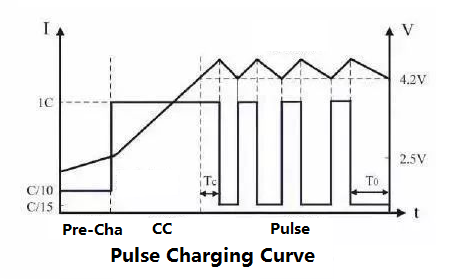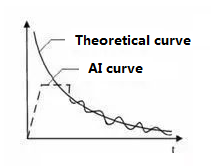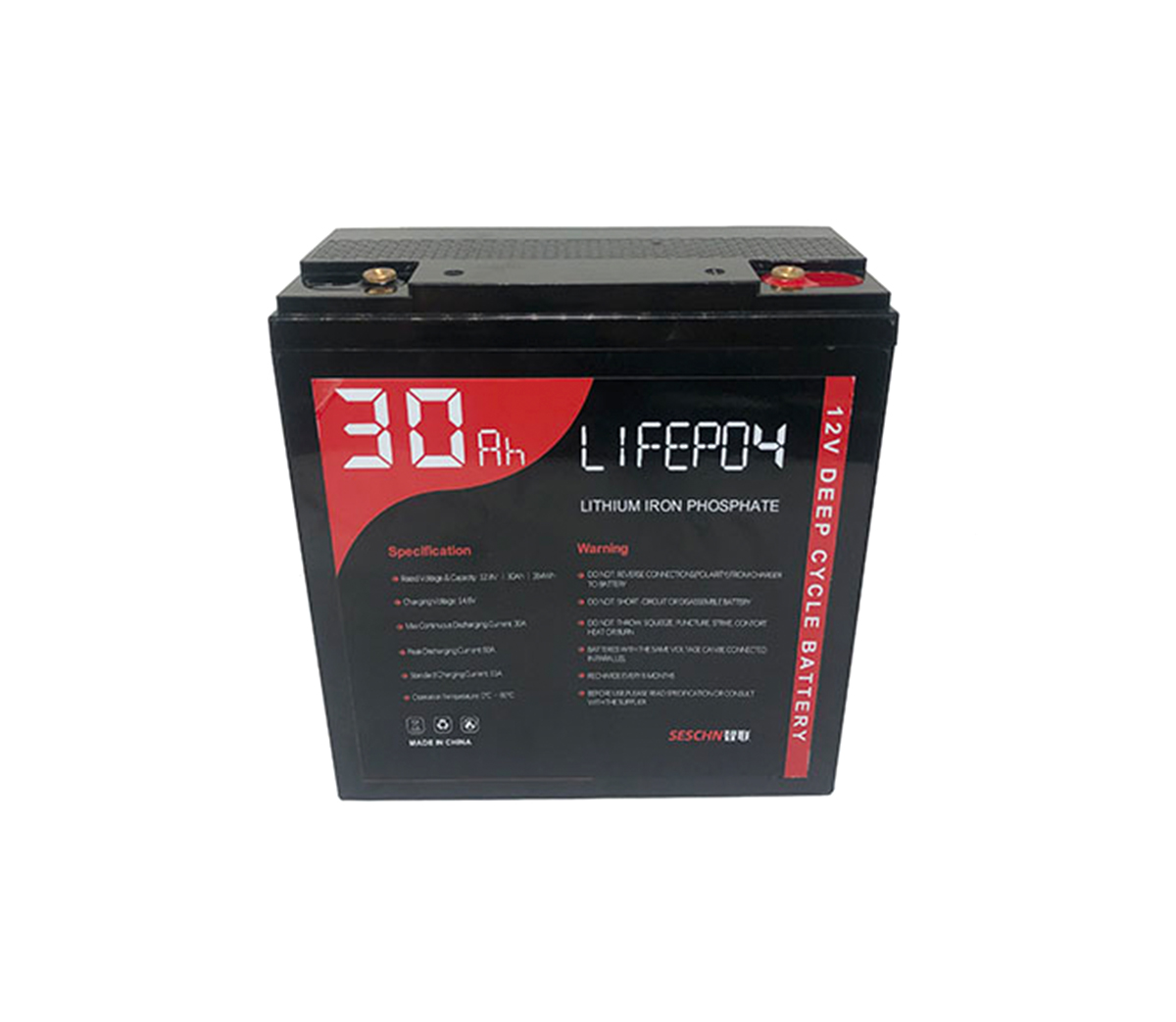As secondary rechargeable batteries that have been widely used, lithium ion
batteries have penetrated into every aspect of our lives. For most users, the
value of lithium-ion batteries is reflected in the discharge phase, and the
charging phase is completely ineffective and forced to waste time. Because of
this, manufacturers continue to improve the charging technology of lithium-ion
batteries. SES Power remembers that it took at least 1-2 hours to fully charge a
mobile phone ten years ago, and now a mobile phone only needs more than 20
minutes to be fully charged. It can be almost fully charged. The charging time
of the first-generation Tesla electric vehicles often took more than an hour to
get close to a full charge, but now it only takes about 40 minutes.
Of course, not all applications of lithium-ion batteries require fast
charging. SES Power is good at lithium battery energy storage, UPS backup power,
microgrid, home energy storage, etc. In fact, there is no urgent need for
charging time. On the contrary, sometimes it is necessary to appropriately
reduce the charging current to achieve the purpose of extending the charging
time (because the cost of the charger is proportional to the output power). We
use 12V, 24V, 36V, 48V series that can perfectly replace lead-acid batteries,
3Kw~20Kw (you can choose different capacity lithium batteries to match) home
energy storage system, photovoltaic power generation energy storage system,
large inverter (UPS) For supporting products, etc., it is necessary to consider
the charging conditions in the design stage, and try to choose the most
cost-effective charging solution.
Below we will look at the proposition of fast charging from a purely
technical point of view for lithium-ion battery applications that require fast
charging.
A: How fast is the charge to be called "quick charge"?
The basic demands of ordinary consumers for lithium-ion battery charging
are:
1) Charge fast;
2) Do not affect the battery life;
3) To save money as much as possible, try to charge as much electricity as
possible into my battery.
So fast can be called fast charge? There is no standard literature that
gives specific values. Let’s refer to the standards of the electric vehicle
industry for the time being. The entry-level fast charge is 3C, which
theoretically takes 20 minutes to charge. Of course, this is unrealistic. We
generally think that 80% full in 30 minutes can be recognized as fast charging.
According to this idea, 80% of the lithium-ion battery is fully charged in 15
minutes, which is equivalent to working in a 3.2C state of charge.
B: What is the bottleneck of fast charging?
In the general proposition of fast charging, it is necessary to classify
the surrounding areas, such as batteries, chargers, and power distribution
facilities.
When we discuss the proposition of fast charging, the first thing that
comes to our mind is whether there will be a problem with the battery. In fact,
before there is a problem with the battery, the first problem is the charger and
the power distribution line.
Tesla's charging pile, known as a super charging pile, has a power of
120kW. According to the parameters of Tesla Model S85D, 96s75p, 232.5Ah, and the
highest 403V calculation, its 1.6C corresponds to the maximum demand power of
149.9kW. It can be seen from here that for long-range pure electric models, 1.6C
or 80% full charge in 30 minutes has already constituted a test for the charging
pile.
In the industry and national standards, it is not allowed to directly set
up charging stations in the original residential electricity network, because
the power consumption of one fast charging pile has already exceeded the
electricity consumption of dozens of households. Therefore, charging stations
all need to set up 10kV transformers separately, and not all distribution
networks in a region have the margin to add more 10kV substations.
As for whether the battery can carry 1.6C or 3.2C charging requirements, it
can be viewed from both macro and micro perspectives.
C: The macroscopic fast charging theory of lithium batteries
The reason why the title of this section is called "Macroscopic Fast
Charging Theory" is that what directly determines the battery's fast charging
capability is the properties of positive and negative materials, microstructure,
electrolyte composition, additives, diaphragm properties, etc. inside the
lithium battery. Content. Let's put aside for a moment what's almost entirely
lithium-ion battery expertise, and then we'll stand entirely outside the battery
and see how lithium-ion batteries can be fast-charged in third vision.
C1: There is an optimal charging current for the battery
In 1972, American scientist J.A. Mas proposed that the battery has an
optimal charging curve and Mas's third law during the charging process. It
should be noted that this theory is proposed for lead-acid batteries, and the
boundary condition that defines the maximum acceptable charging current is a
small amount. The production of side reaction gases is obviously related to the
specific reaction type.
But the idea that there is an optimal solution in the system is universal.
Specific to lithium batteries, the boundary conditions that define their maximum
acceptable current can be redefined. Based on the conclusions of some research
literature, its optimal value is still a curve trend similar to Maas' law.
It is worth noting that the boundary conditions of the maximum acceptable
charging current of lithium batteries need to consider not only the factors of
lithium battery cells, but also system-level factors, such as different heat
dissipation capabilities, the maximum acceptable charging current of the system
is different. .
Then we will continue the discussion on this basis for the time being.
The formula description of Maas' theorem:
I =I0*e^αt
In the formula; I0 is the initial charging current of the battery; α is the
charging acceptance rate; t is the charging time. The values of I0 and α are
related to battery type, structure and condition.
The current research on battery charging methods is mainly based on the
optimal charging curve. As shown in the figure below, if the charging current
exceeds this optimal charging curve, it will not only not improve the charging
rate, but also increase the gas evolution of the battery; if it is less than
this optimal charging curve, although it will not cause damage to the battery,
it will prolong the charging. time, reducing the charging efficiency.

The elaboration of this theory consists of three levels (Maas's third
law):
① For any given discharge current, the current acceptance ratio α when the
battery is charged is inversely proportional to the square root of the capacity
released by the battery;
② For any given discharge amount, α is proportional to the logarithm of the
discharge current Id;
③ After the battery is discharged at different discharge rates, its final
allowable charging current It (acceptance capacity) is the sum of the allowable
charging currents at each discharge rate.
The above theorem is the source of the concept of charge acceptance. The
charging acceptance capacity is the maximum capacity that can be used for a
rechargeable battery with a certain amount of charge under a specific
environment and condition without causing undue side reactions and adverse
effects on the life and performance of the battery cell. recharging current.
SES Power will further understand the three laws of mas for you:
The first law is that after the battery discharges a certain amount of
power, its charge acceptance capacity is related to the current charge capacity.
The lower the charge capacity, the higher the charge acceptance capacity.
The second law, during the charging process, pulse discharge occurs, which
helps to improve the real-time acceptable current value of the battery;
The third law, the charge acceptance capacity will be affected by the
superposition of the charge and discharge conditions before the charging
time.
If the Maas theory is also applicable to lithium batteries, the reverse
pulse charging (hereinafter referred to as the Reflex fast charging method) can
be explained by depolarization. Support for the pulse method.
Of course, the intelligent charging method that can really apply the Maas
theory is to track the battery parameters, so that the charging current value
always follows the Maas curve of the lithium battery, so that the charging
efficiency can be maximized within the safety boundary.
C2: Common fast charging methods
There are many charging methods for lithium batteries, and for the
requirements of fast charging, the main methods include pulse charging, Reflex
charging, and intelligent charging. Different battery types have different
charging methods.
C2.1 Pulse charging
The standard pulse charging method in the literature is that the pulse
phase is set after the charging reaches the upper limit voltage of 4.2V, and
continues above 4.2V (taking the ternary lithium battery as an example). Not to
mention the rationality of its specific parameter settings for the time being,
because there will be differences between different types of batteries.
Let's focus on the pulse implementation process. The following is the pulse
charging curve, which mainly includes three stages: pre-charge, constant current
charging and pulse charging.
During constant current charging, the battery is charged with a constant
current, and part of the energy is transferred to the inside of the battery.
When the battery voltage rises to the upper limit voltage (4.2 V), the
pulse charging mode is entered: the battery is charged intermittently with a
pulse current of 1 C.
During the constant charging time Tc, the battery voltage will continue to
rise, and the voltage will slowly drop when charging stops.
When the battery voltage drops to the upper limit voltage (4.2 V), the
battery is charged with the same current value to start the next charging cycle,
and so on until the battery is fully charged.

During the pulse charging process, the battery voltage drop speed will
gradually slow down, and the charging stop time T0 will become longer. When the
constant current charging duty cycle is as low as 5% to 10%, the battery is
considered to be fully charged and the charging is terminated.
Compared with the conventional charging method, the pulse charging can be
charged with a larger current, and the concentration polarization and ohmic
polarization of the battery will be eliminated during the charging stop period,
so that the next round of charging can be carried out more smoothly, and the
charging speed is fast. The temperature change is small and the impact on
battery life is small, so it is widely used at present.
But the disadvantage is obvious: a power supply with limited current
capability is required, which increases the cost of the pulse charging
method.
C2.2 Intermittent charging method
The lithium battery intermittent charging method includes variable current
intermittent charging method and variable voltage intermittent charging
method.
C2.2.1 Variable current intermittent charging method
The characteristic of the variable current intermittent charging method is
to change the constant current charging to the voltage limiting variable current
intermittent charging.
In the first stage, the battery is charged with a larger current value, and
the charging is stopped when the battery voltage reaches the cut-off voltage V0,
and the battery voltage drops sharply at this time.
In the second stage, after a period of off-charging time, the charging is
continued with a reduced charging current.
In the third stage, when the battery voltage rises to the cut-off voltage
V0 again, stop charging, so the charging current for several times (generally
about 3 to 4 times) will reduce the set cut-off current value.
Finally, it enters the constant voltage charging stage, and charges the
battery with a constant voltage until the charging current decreases to the
lower limit value, and the charging ends.
In the main charging stage of the variable current intermittent charging
method, under the condition of limited charging voltage, the intermittent mode
of gradually decreasing current is adopted to increase the charging current,
that is, the charging process is accelerated and the charging time is shortened.
However, this charging mode circuit is relatively complex and expensive, and is
generally only considered for high-power fast charging.
C2.2.2 Variable voltage intermittent charging
On the basis of the variable current intermittent charging method, some
people have studied the variable voltage intermittent charging method. The
difference between the two lies in the charging process in the first stage,
which replaces the intermittent constant current with the intermittent constant
voltage.
In each constant voltage charging stage, due to the constant voltage, the
charging current naturally decreases according to an exponential law, which is
in line with the characteristic that the acceptable rate of battery current
gradually decreases with the progress of charging.
C2.2.3 Reflex fast charging method
The Reflex fast charging method, also known as the reflex charging method
or the "hiccup" charging method. Each working cycle of this method includes
three stages: forward charge, reverse instantaneous discharge and stop
charge.
It solves the phenomenon of battery polarization to a large extent and
speeds up the charging speed. But reverse discharge will shorten lithium battery
life. SES Power is here to remind you that lead-acid batteries are the biggest
beneficiaries of this approach.
C2.2.4 Intelligent charging method
Intelligent charging is a more advanced charging method at present. The
main principle is to apply du/dt and di/dt control technology: by checking the
increment of battery voltage and current to judge the battery charging state,
dynamically track the acceptable charging current of the battery, and make
charging the current is always around the maximum charging curve that the
battery can accept.

This kind of intelligent method generally combines advanced algorithm
technology such as neural network and fuzzy control to realize the automatic
optimization of the system.
At the end of the article, SES Power needs to remind you that many
customers often ask whether they can use the original lead-acid charger for
lithium-ion batteries after purchasing the 12V100Ah and 24V100Ah (lead-acid
replacement products) of our lithium iron phosphate batteries. The answer to the
question of charging is: the characteristics of lithium-ion batteries are
different from those of lead-acid batteries. Do not use lead-acid battery
chargers to charge lithium-ion batteries, even if the charging voltage
parameters are the same!





































